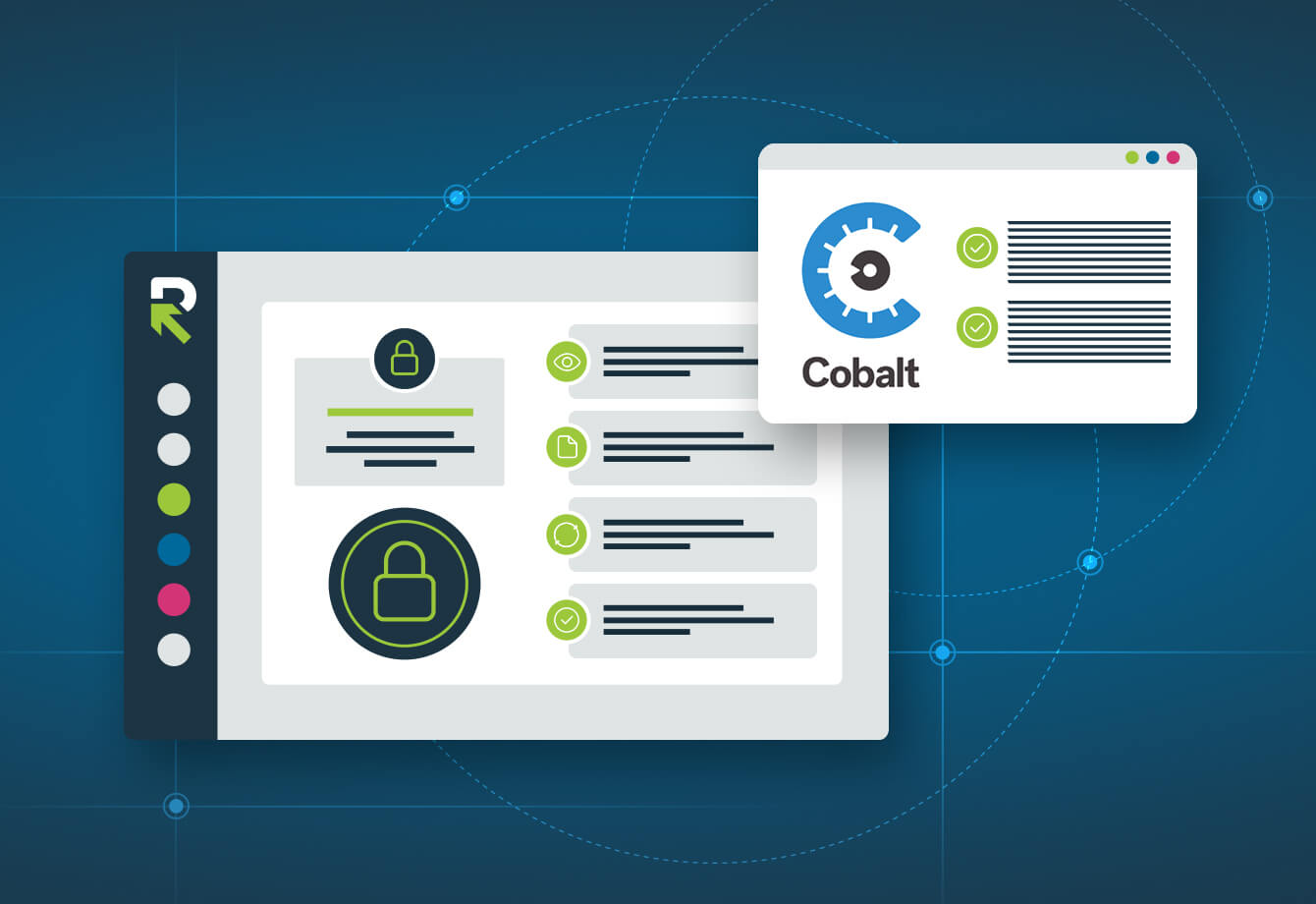If you’re like me, you regularly receive emails advising you to change your passwords because one company or another has suffered a security breach. Unfortunately, data breaches are all too common.
In 2021, there were over 1,800 reported data breaches. That is a significant uptick from prior years. 83% of those breaches involved sensitive customer information, such as Social Security and credit card numbers.
The average data breach costs $4.4 million, and much of that is passed on to customers—the same customers who had their sensitive data compromised.
No wonder many businesses now consider cybersecurity their number one concern. Not only does a data breach cost money, it also runs the risk of damaging credibility and eroding trust. Some companies, especially small companies, never recover.
More than half of organizations have experienced third-party data breaches, often despite having what they think is a rigorous security protocol.
The average tech stack might contain dozens of different applications and tools. Sometimes, bad actors sneak in through one of those third-party applications, so it’s critical to properly vet each vendor’s security protocols as you would your own.
The most common way to vet vendors is through security questionnaires. But what are security questionnaires, and how do you respond to them in a way that you, as a vendor, will instill trust?
What is a security questionnaire?
After reading this far, you probably have a good idea of what a security questionnaire is. Still, to boil it down, it’s a questionnaire designed to determine whether a vendor or potential vendor is compliant with your security and legal requirements.
Not surprisingly, security questionnaires are complex and highly technical. The good news is that most questions have “yes” or “no” answers.
DDQ vs. security questionnaire
Many people confuse security questionnaires and DDQs (due diligence questionnaires). It’s easy to see why, as both are issued to assess a company’s compliance with the issuer’s regulations and security requirements.
Neither DDQs nor security questionnaires are specifically part of a sales cycle, although they may be issued before entering into a contract. They might also be issued before an organization is even buying to weed out non-compliant companies before and if the buying process begins.
There are significant differences between the two types of documents, however. You’re most likely to see DDQs if you’re in the financial segment. They are broader in scope than security questionnaires and may ask about business plans, profits and losses, revenue, etc. They might also ask about cybersecurity policies.
A security questionnaire is more straightforward and can be issued from any segment to any organization, although primarily to tech companies. While DDQs ask broad questions about processes, often in narrative form, a security questionnaire forces you to pony up your proof of compliance.
You might see both a DDQ and security questionnaire before receiving an RFP. Generally, the DDQ will come first. Once the issuer is satisfied that you meet their requirements, they might send a security questionnaire to gather certificates and other forms of proof.
In some cases, a security questionnaire follows an RFP and could be the last step before finalizing a deal.
Preparing for a security questionnaire response
Security questionnaires usually arrive via the response manager or perhaps through a CRM. Since most questions center around cybersecurity, SMEs can be from IT, risk management, sales engineering, accounting, information security, operations, and even HR.
The response turnaround time is typically shorter with a security questionnaire than with an RFx. The issuer might want it within days.
Components of a security questionnaire
There are many, many types of security questionnaires, and it would be impossible to list them in this blog post, but here are some examples of what a security questionnaire might assess:
- Network security
- Information security
- Datacenter and physical security
- Web application security
- Infrastructure security
- Business continuity
- Security audits and penetration testing
- Personnel policies, hiring practices, and training programs
- Security certifications
- SLAs and uptime vs. downtime
Types of security questionnaires
There are several types of security questionnaires, but primarily, you will see these:
Security Questionnaires and Security Questionnaires Lite – Standardized Information Gathering Questionnaires
- VSAQ – Vendor Security Assessment Questionnaire
- CAIQ – Consensus Assessments Initiative Questionnaire
- VSA – Vendor Security Alliance Questionnaire
- NIST 800-171 – National Institute of Standards and Technology Questionnaire
- CIS Controls – Center for Internet Security Questionnaire
How to respond to security questionnaires – and how Responsive will help
If you are a response manager, you’re likely very comfortable responding to an RFx or even a DDQ. Both allow for a bit of creativity, in that, along with answering questions, you’re constructing a narrative to show how your company is the right fit for the issuer.
Security questionnaires aren’t about narratives. They are straightforward and stringent, and accuracy is a legal requirement. Clearly, there’s no room for error. If you’re ready, let’s grab a cup of coffee, or your favorite motivational elixir, and dive right in.
Step 1 – Search for all available materials
While security questionnaires are undeniably bulky and complex, there’s a lot of redundancy. You have probably answered many similar questions before. Search your existing database for those answers.
Often, issuers send a boilerplate questionnaire rather than customize it to each product. Eliminate the questions that don’t apply to your product. Don’t be afraid to ask the issuer to clarify questions that seem confusing or unnecessary.
Step 1 with Responsive – Prebuilt centralized Content Library
Responsive features the industry-leading AI-powered prebuilt Content Library. Every previous security questionnaire and all your documentation are housed in one place, accessible to any authorized user.
Step 2 – Answer only the pre-existing matching responses
Response management isn’t like school. In fact, copying other people’s work is encouraged. Search your existing database for pre-existing matching responses and use them when you can.
Step 2 with Responsive – System-driven identification of sections and questions
The Responsive platform’s import capabilities, which include Lightning import through Salesforce, leverages machine learning to automatically find matching responses, without you having to initiate the process. This feature alone can do up to 80% of the work for you.
Step 3 – Group all unanswered questions and collaborate with SMEs
Once you’ve found all the applicable existing content, you’ll need to collaborate with SMEs to finish the process. Group all your unanswered questions, broken up by SME, and inform them of their timelines.
Step 3 with Responsive – Automate through AI
The Responsive platform includes our auto-respond feature and recommendation engine find existing documents and similar, although not specifically matching, content for SMEs’ review. As a side benefit, once SMEs recognize the time-saving capabilities of Responsive, they’ll be far more likely to help you in the future.
Step 4 – Follow up and track the status of responses
Make sure every team member is completing their portion in a timely manner.
Step 4 with Responsive – Streamline collaboration through project management capabilities
Responsive offers up-to-the-minute reporting and reminders to ensure that the questionnaire will be ready on time.
Step 5 – Manually collate and complete the questionnaire
Whew! You’ve answered all the questions and all you have to do is collate the answers and export them back to the original document. Unfortunately, for many companies, that’s a manual process which could take hours—and sometimes days.
Step 5 with Responsive – Export to the source file
Responsive eliminates all of the cumbersome manual work with automatic exporting to the response file, all within seconds.
Security questionnaire response obstacles
There’s no direct line from a security questionnaire to revenue generation, which is why they’re sometimes left on the back burner. But that’s not the only reason there might be reluctance on the part of your response team. Other obstacles include:
- Length – A security questionnaire can have hundreds to thousands of questions. That’s more than a little intimidating if the answers aren’t ready to go.
- You’re time-bound – Sometimes the questionnaire gets stuck in an internal limbo, and sometimes the issuer sends it expecting an almost immediate turnaround. Having most of the answers ready will cut your response time to a fraction of what it could have been.
- SME cooperation – SMEs are busy people, so understandably, they might not put the security questionnaire at the top of their “to-do” list. Assure them that you value their time by completing as much of the questionnaire as possible.
- You don’t have all the certifications and protocol – Most companies won’t be able to answer every question in the affirmative. Submit what you have and perhaps see this as an opportunity to reevaluate where your company might be lacking.
- Too much jargon – Security questionnaires tend to be jargon-heavy, and if you aren’t familiar with what they’re asking, you might not provide an accurate answer. SMEs can help but so can a well-organized, searchable even by jargon, Content Library.
- Scattered knowledge (identifying and locating the right content) – If you have a siloed knowledge base, tracking everything down is challenging and time-consuming. Upload all of your certificates, documents, and Q&A pairs to a single source of truth accessible to any authorized stakeholder.
- Non-compliant content management software – If your content management software isn’t compliant with your company’s requirements, SMEs, especially those in security, won’t use it. Responsive is even secure enough for Microsoft.
Priorities and tips for the response process
As you’re staring down a seemingly infinite inbox and a calendar filled with back-to-back meetings, speed might be your top priority. However, security questionnaires are legal documents, so accuracy is the most crucial consideration. Fortunately, response software with built-in content management helps ensure both.
Streamlining workflow
Responsive has several tools to help streamline your workflow, including:
- Import/Export capabilities – Avoid disorganized, inconsistent, illogical formatting by importing security questionnaires right into your customized template for uniformity, making each stakeholder’s job much more manageable. Once you’ve completed the questionnaire, upload it onto your branded response template or straight to the source document.
- Project management – If your workforce is like ours, you have people working from home, on other floors, in other buildings, and across the world. Responsive helps you virtually gather your scattered stakeholders and track progress without chasing people down.
- Content management – If I, for some reason, were forced to choose my favorite Responsive feature, it would be the AI-powered Content Library. It:
- Busts down silos – The Responsive Content Library is a single source of truth, with all of your company’s knowledge and documents in one repository.
- Does most of the work for you – Once you upload the questionnaire, the Content Library’s magical gnomes—we call them the recommendation engine—comb through past responses to make suggestions. All you have to do is accept, edit, or reject. Since security questionnaires ask yes/no questions, there’s little to no editing.
- Stores content – As the company creates more knowledge and documents, the Content Library will store them for future use.
- Organizes content – Format, tag, and generally organize the content how you want.
- Helps keep you compliant – Since we’re talking about security questionnaires, your security team will love this! Responsive reminds you of expiration and “shred by” dates. It also reminds you when to review specific content and when to audit.
- Integrations – Responsive seamlessly integrates with nearly all the communication apps, CRMs, and productivity apps your company uses every day.
- Responsive® LookUp – Access the Content Library from anywhere in the world.
- Responsive eSignature – With eSignature, there’s no need to hunt signatories down. They can sign right from their computers.
Improving Content Library
Keep your content library clean, up to date, and organized by consulting with sales engineers and others involved in answering security questionnaires. Ask for their input in categorizing and tagging.
Keeping information up-to-date
Because security questionnaires are legal documents, accurate and up-to-date information is vital. Responsive reminds you to clean out all the ROT (redundant, outdated, and trivial) information and documents. It even helps you locate all the ROT.
Software for security questionnaire responses
Many companies still rely on manual responses, which are time-consuming and inefficient.One way to differentiate your company from your competitors is to use advanced RFP software for security questionnaires.
Response software, such as Responsive, gives each security questionnaire the thoroughness and scrutiny required while saving your team’s time, keeping SMEs on your good side, and helps keep you compliant.
Automation
If you use a CRM or project management software, you probably already know the benefits of automation. Most users do. In fact, IT professionals, such as those helping answer security questionnaires, save up to 20 hours a week using automated processes.
Automation is a morale booster! 45 percent of knowledge workers report feeling less burned out when they use automation tools, and 29% say automation lets them leave their jobs at the end of the official workday.
The Responsive platform’s automated response processes automatically fill in most of your answers to a security questionnaire and pull corresponding documents. One customer reports that after Responsive security questionnaire automation, they can answer 100 questions in just 2 hours!
Templated responses
Most security questionnaires arrive in Excel, which, as you know, is about as standardized as the snowflakes covering Mount Everest. Excel isn’t to blame. Microsoft designed the OG of spreadsheets to track everything from kids’ activities to trips to space.
Responsive imports the hundreds to thousands of lines on a security questionnaire spreadsheet onto your customized template, ensuring that everyone knows exactly how to find what they need. Additionally, since many questions are redundant, Responsive answers those duplicate questions for you.
The Responsive approach to security questionnaire responses
Breathe a little easier next time you receive a security questionnaire, knowing that Responsive has your back. You will save loads of time, create accurate, complete responses, and stay on your SMEs’ good sides.
If you don’t already use Responsive, request a free demo to see it in action.



